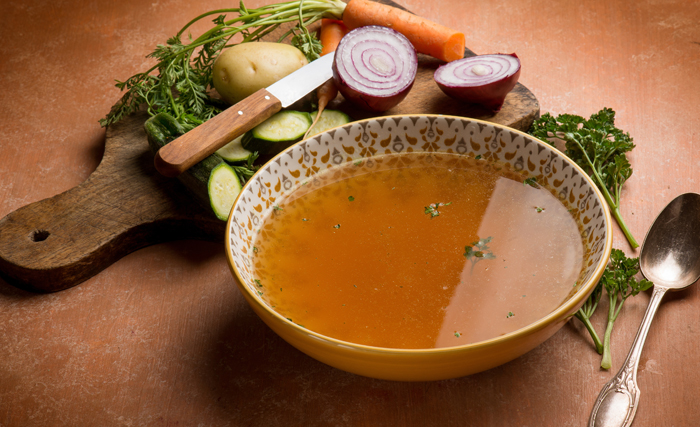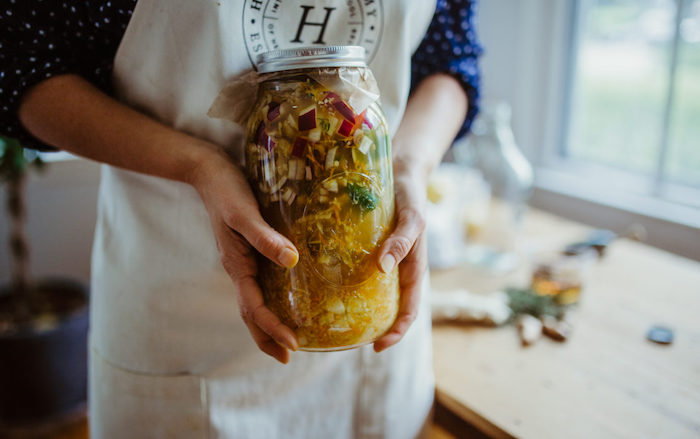5 Things We Learned From Doing a 30-Day Elimination Diet
FEBRUARY 15, 2018 by OLIVIA NEELY, RDN, LD
As many of you have seen on social media, our office recently participated in a 30-day elimination diet. This included elimination of eggs, caffeine, alcohol, industrial seed oils, added sugars, gluten, soy and dairy.
Why do an elimination diet?
The quick and dirty answer is that relying too heavily on all or some of the foods above is not beneficial for long-term health and wellness. An elimination diet can provide much needed, non-biased insight into how much of these foods and chemicals you’re really consuming in a day’s or a week’s time. We’ve all been there—“I don’t need coffee, I just love the taste”—but in reality, you have it every morning as part of your normal routine. Or, “I don’t drink alcohol that much… only on weekends… and once on Wednesday… and wine on Tuesdays with the girls.” Yeah, often these foods can creep into the diet with much higher frequency than we realize.
Also, an elimination diet is the gold standard for discerning if hidden food sensitivities are an issue for you.
But I don’t have any food allergies.
First off, let’s understand the difference between food allergies and food sensitivities. Your immune system produces two types of antibodies commonly: immunoglobulin E (IgE) and immunoglobulin G (IgG) against certain foods or allergens. Food allergies cause immediate reactions and can occur within minutes of consuming the reactive food. Think of a child with a peanut or shellfish allergy. Food allergies are usually ones that you are aware of and take precautions to avoid as they can cause difficulty breathing, rashes, and even anaphylaxis.
Food sensitivities, on the other hand, are your body’s IgG response to certain foods that can occur hours to days after they are consumed. Symptoms vary but can include:
Belching
Diarrhea
Runny nose, sinusitis, issues with extra phlegm
Skin reactions
Trouble losing weight
Food sensitivities can be hard to pinpoint in the diet, since reactions can be delayed and even dose mediated (meaning a small part of food may not cause an issue but a large portion will).
Testing is available to determine a patient’s food sensitivities with variable accuracy and reproducibility, but the gold standard is elimination followed by reintroduction of the foods in question. It takes the body at least 20 days to clear potentially problematic proteins from the body. Enter the 30-day elimination diet, which removes foods most commonly associated with hidden food sensitivities. At the end of the 30-day elimination diet (TODAY!), it is then possible to restore these foods and chemicals to the diet one at a time to see which cause symptoms and which do not.
Elimination diets are a tool I use in clinical treatment quite often to help people find hidden food sensitivities. Because I like to make sure I never ask my clients to do something out of reach, I decided to give it a shot myself. Fortunately, I have amazing co-workers and friends who jumped right in and participated, too.
So, what did we all learn from this elimination diet?
Never strive for perfection. Diet changes are hard and can be overwhelming. Do the best you can but don’t count all as lost if you (even accidentally) slip up. This might be the number one mistake I see people make. Avoidance of possibly problematic foods for 30 days is the goal… this allows a chance for many to discover how lousy they’ve actually been feeling for weeks, month, maybe even years as that feeling has unfortunately become the “new normal.” However, slip-ups are a normal part of any growing experience. They can be unintentional (yes, that California roll actually has wheat starch in the crab meat) or an intentional decision to make an exception (like when we decided as a team to have wine with dinner at a fancy work event). We all managed to gain important insight into our health even with these imperfect experiences within in the 30-day challenge.
It gets worse before it gets better. The first week of the elimination diet was by far the hardest. The office definitely had a different vibe during this first week. I will also point out that we are quite health-conscious in this office (you shouldn’t be surprised there). None of us are coming from the Standard American Diet while making these changes, and difficulties still surfaced. None of us could escape the afternoon fatigue (likely from not having a false energy rush from our morning java), certain spouses pointed out some moodiness and irritability (yep, that’s what pulling back on hidden sugars will do for you), and a few of us were even reminded of pre-teen years with some acne that popped up (the skin is a major detoxification organ). The key here was to be patient with our bodies and allow for extra rest. This could mean going to bed earlier, not going to that exercise class after work but enjoying an Epsom salt bath at home instead, or saying no to that fifth networking event scheduled for the month in favor of reading a chapter in a novel collecting dust on the shelf.
You don’t have to become a recluse. For many people, alcohol and sugar especially, have become central to social gatherings. If this rings true for you, use this time to understand the reasons behind this. Do you use certain foods to achieve a feeling of satisfaction? Are you reaching for a pick-me-up in the form of caffeine, alcohol or sugar after you skip a meal? Sit with this. Address what’s happening behind the scenes that could be driving this need and learn how to eat sugar the right way instead. Are your days entirely too busy and stressful, so much so that you feel like that nightly glass of wine is your only way to come down? That stress needs addressing. For one month (with the exception of the dinner out with the office as mentioned above), I attended parties, concerts and birthday celebrations—even went on a date or two—and had a completely different and refreshing experience without using alcohol and sugar to help me celebrate. We all took away this major lesson: It’s not what’s at the table but who’s at the table that matters.
Food is information. After allowing the 30 days to remove potential problematic proteins, it is important to re-introduce foods back into the diet one at a time. Believe it or not, some people feel so good off of certain foods they choose not to bring them back! For others, this time of re-introduction provides a clear idea of which foods are causing symptoms. Here are some of the major feedback signals we got during the re-introduction phase…
Headache and Gluten. With the re-introduction of gluten also came a dull headache for Kristie. This direct connection was never noticed before, when gluten and wheat were part of her regular diet but became clear when this was the only food added back into the diet.
Energy and Coffee. Usually coffee gives up more energy, right? Well, it’s a little more complex than that. Caffeine stresses the adrenals, which are two little organs sitting on top of the kidneys, to provide a forced burst of energy. Relying on this production method for energy day in and day out can wear out the adrenals and impair the body’s natural production of energy. Without caffeine over the past month I actually began to feel more natural energy than I had in a long time. As much as I love coffee and will enjoy it here and there, it will not become a necessary component of my morning routine again.
The body is capable of amazing healing. We put our bodies through a lot in any given day. When we are constantly stressed and running on empty, it’s no wonder we get push back and begin to feel tired, bloated, overweight, or sluggish. It’s time to start thinking how you might be hijacking your body from true healing. Our very own physician assistant, Jon,experienced relief from acid reflux he had experienced for years prior to doing the diet. I have gone from a multiple-snooze-hitter in the morning to waking up with natural energy. Kristie is pursing a blood test to see if she has issues digesting wheat and gluten and has absolutely glowing skin. The body is capable of amazing things if you give change a chance.
Interested in doing a guided elimination diet? We can help.




